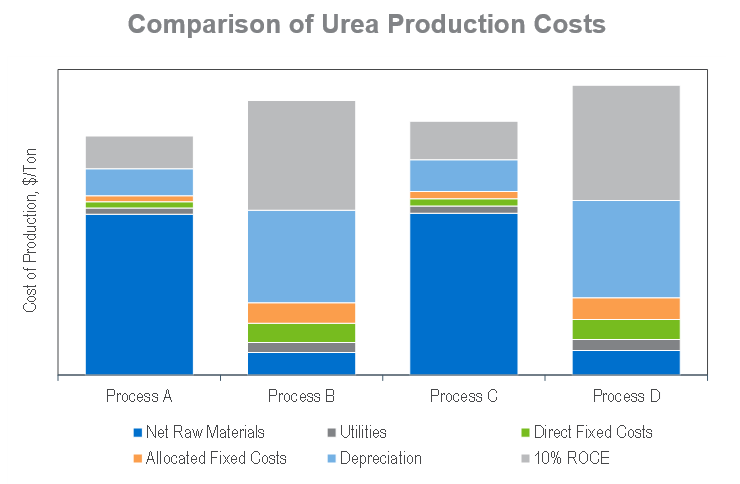New TECH Report - Urea (2024 Program)
Urea is one in a series of reports published as part of NexantECA’s 2024 Technoeconomics – Energy & Chemicals (TECH) program.
Overview
Urea is the most used and traded fertilizer in the world; approximately 56 percent of global ammonia production is converted to urea. Urea makes a major contribution to food supply, particularly in the third world. With 46 percent nitrogen, it is the most concentrated form of solid nitrogenous fertilizer, providing a logistics advantage over ammonium nitrate fertilizers.
This TECH report provides an updated overview of the technological, economic, and market aspects of urea. The following issues are addressed in this report:
Who are the major technology holders for urea production? What are some of the differences across the various technologies?
Who are the top producers of urea? What are the strategic and business considerations associated with entering the urea market?
What are the primary end use markets for urea?
What are the recent technological innovations for urea production?
How do the process economics compare across processes and different geographic regions?
How does carbon intensity compare across different geographic regions, as well as between stand-alone and integrated production of urea?
Commercial Technologies
Today, all urea is made commercially with ammonia and carbon dioxide in a two-step reaction. In the first step, ammonia and carbon dioxide combine on a 2:1 ratio basis to give ammonium carbamate, also known as ammonia carbonate. The second step is the relatively slow dehydration of ammonium carbamate to yield urea. Its production consists of five process steps: synthesis, decomposition, recovery, concentration, and finishing.
Process technology for urea has been under the tight control of few players where the main routes used today are stripping processes. Three key licensors account for almost 90 percent of the urea plants in operation worldwide (excluding China).
There are currently no bio-urea facilities. While there have been efforts to produce green urea via green ammonia and carbon neutral or carbon negative carbon dioxide as feedstock, such methods have thus far not reached commercial scale.
Process Economics
Detailed cost of production estimates for various technologies are presented for USGC, China, Western Europe and Middle East locations. Estimates are developed for two commercial routes to urea. Sensitivity analyses on feed pricing, economy of scale, and capital investment are also included.
Comparison of Urea Production Costs

Commercial Overview
Global urea consumption is estimated at approximately 192.2 million tons in 2024, with its direct application as a fertilizer being the largest end-use. Urea demand is heavily driven by the fertilizer and food production industries as urea is used in many parts of the world as the primary source of nitrogen for crop nutrition.
Urea is also used in the production of other nitrogen-based fertilizers such as urea ammonium nitrate, as a feedstock for urea formaldehyde resins and melamine, and since the mid-2000s has been used to produce a diesel exhaust fluid (DEF) to help reduce emissions of nitrogen oxides from diesel engines.
Contact a member to our Insights & Analytics team to find out more about this report